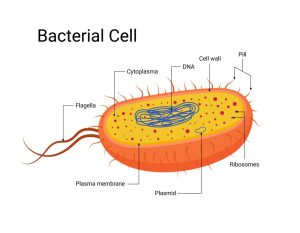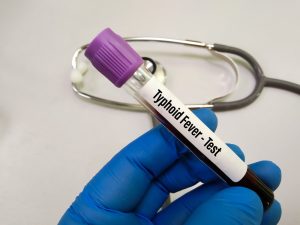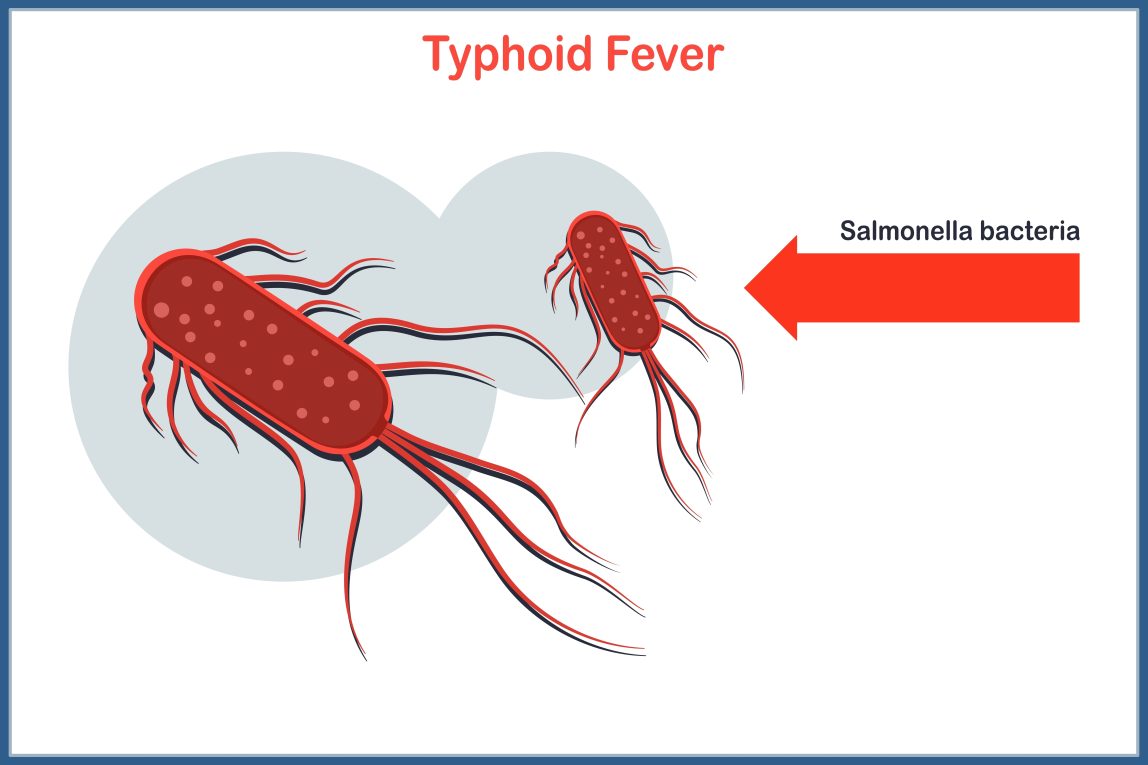Typhoid fever, or enteric fever, often referred to simply as typhoid, is a severe bacterial infection that can spread throughout the body, affecting many organs. Without prompt treatment, it can cause complications and can be fatal.
What is Typhoid?
Typhoid is a bacterial infection that can be spread by eating or drinking contaminated food or water or by coming into close contact with someone who has been infected. The incidence of typhoid is higher in areas where water is likely to be contaminated with sewage. Although it has been largely eradicated in developed countries due to better sanitary conditions and effective vaccinations, typhoid remains a significant threat in developing nations.
In time of war, soldiers, however sensible, care a great deal more on some occasions about slaking their thirst than about the danger of enteric fever. Better known as typhoid, the disease is often spread by drinking contaminated water. – Winston Churchill
Difference between Typhoid and Paratyphoid:
No, typhoid and paratyphoid are caused by different strains of Salmonella bacteria: typhoid by Salmonella Typhi and paratyphoid by Salmonella Paratyphi. They are bacterial infections that cause similar symptoms and are often grouped as ‘enteric fever.’ This means paratyphoid is generally considered to be a less severe form of the illness compared to typhoid.
Causes of Typhoid:
The bacterium Salmonella Typhi causes typhoid fever. This is not the same bacterium that causes the more familiar salmonellosis, which typically results in gastroenteritis. A human carrier deposits typhoid bacteria in water or food and then carries them to other people in the area.

Symptoms of Typhoid:
The symptoms of typhoid fever appear 1-2 weeks after exposure to the bacteria. Early illness includes:
- High Fever that starts low and increases daily, possibly reaching as high as 104.9 °F (40.5 °C)
- Headache
- Weakness and fatigue
- Dry cough
- Diarrhea or constipation
- Rash
- Loss of appetite and weight loss
- Stomach pains
- Muscle aches
- Sweating
As the disease progresses, patients may not feel sick, but they can continue to have a fever. If not treated, symptoms may worsen, and complications can develop.

Typhoid Complications:
If left untreated, typhoid can lead to life-threatening complications, typically in the third week of illness. These may include intestinal bleeding or perforations, which can lead to peritonitis—an infection of the inner lining of the abdomen, which can cause severe sepsis and shock.
Typhoid Diagnosis:
Your doctor may diagnose typhoid fever based on the symptoms, medical background, and travel history. The doctor might suggest a few typhoid tests to confirm the diagnosis. Growing Salmonella enterica serotype Typhi in a sample of body fluid or tissue is enough to prove the diagnosis.
Typhoid is usually diagnosed by detecting Salmonella typhi in a culture of your blood, stool, urine, or bone marrow. Other typhoid tests might include a complete blood count (CBC), which shows a high number of white blood cells, or a Widal test, which detects antibodies against typhoid bacteria; blood culture, bone marrow culture, and an ELISA blood test and Fluorescent antibody study.

Treatment of Typhoid:
Typhoid fever requires prompt antibiotic treatment to prevent serious complications and death. The choice of antibiotics for typhoid and the duration of treatment depend on the disease’s severity and the local antibiotic resistance patterns. Along with antibiotics, it’s crucial to rehydrate by drinking adequate water. In more severe cases, fluids may need to be delivered intravenously.

Typhoid Prevention:
Prevention is always better than cure, especially in the case of typhoid, which can be prevented through several measures:
-
Typhoid Vaccine:
Typbar TCV Vaccine is an active immunization agent. It is taken to prevent typhoid fever caused by the bacteria S. Typhi. Typhoid vaccines in India are Typbar TCV and Typbar manufactured by Bharat Biotech. Typhoid vaccines are available for people travelling to areas where typhoid is common. There are two types of typhoid vaccines available in most countries—oral and injectable.
-
Safe drinking water:
Drink clean bottled water and avoid drinking contaminated water. Boil it if you need clarification on its cleanliness.
-
Hygienic eating practices:
Avoid raw fruits and vegetables unless you can peel them yourself. Avoid consuming raw or undercooked eggs, meat, and fish.
-
Hand hygiene:
Wash your hands with soap and water regularly, mainly before eating or preparing food and after using the bathroom.

Travel Advice:
If you travel to high-risk areas where typhoid is prevalent, consider taking typhoid vaccination at least 1-2 weeks before you travel so the vaccine has enough time to take effect. Avoid consuming potentially contaminated food and water and follow good hand hygiene practices.
Conclusion:
Typhoid fever is a challenging disease, but it can be prevented and treated with appropriate measures. Awareness of risk factors, symptom recognition, and adherence to preventive strategies are critical in combating this disease, especially in endemic regions. With the proper precautions and responses, typhoid does not have to be a life-threatening condition.

